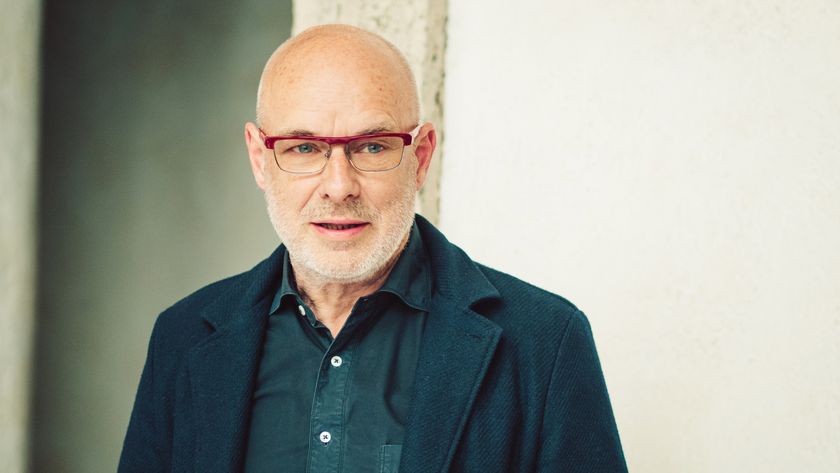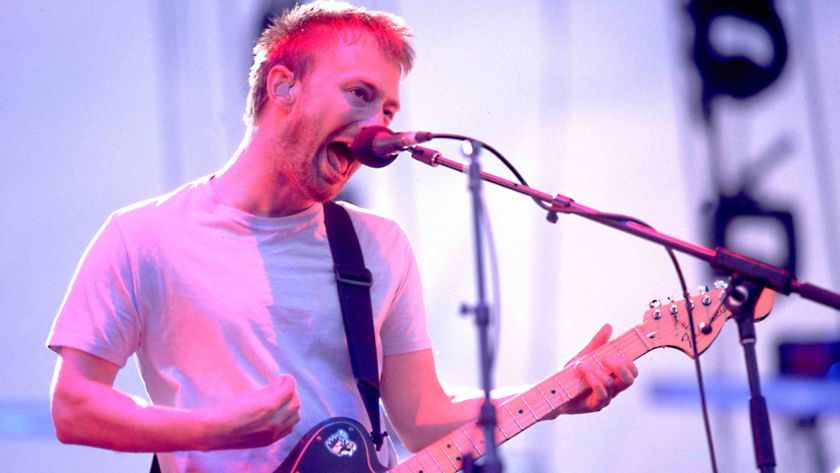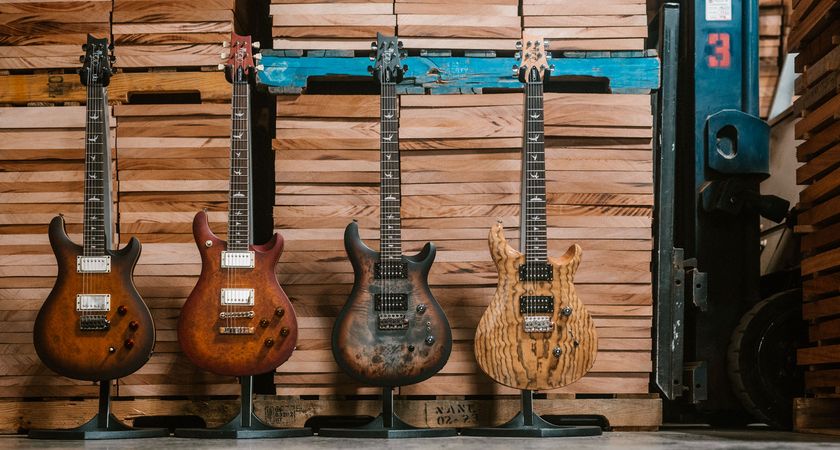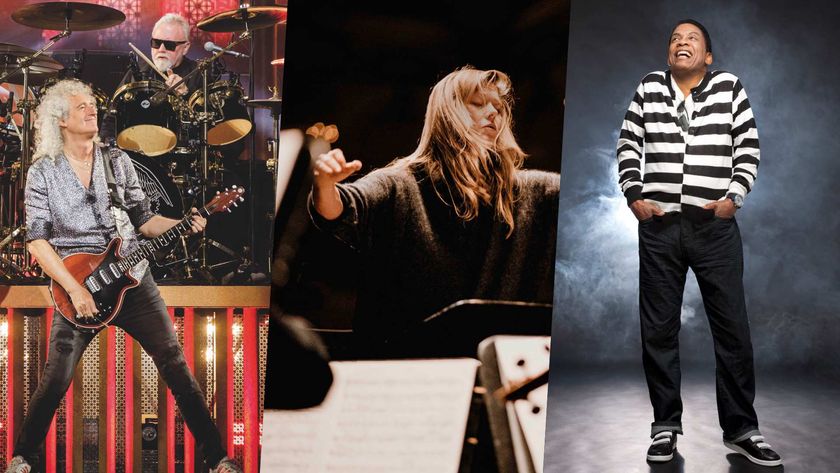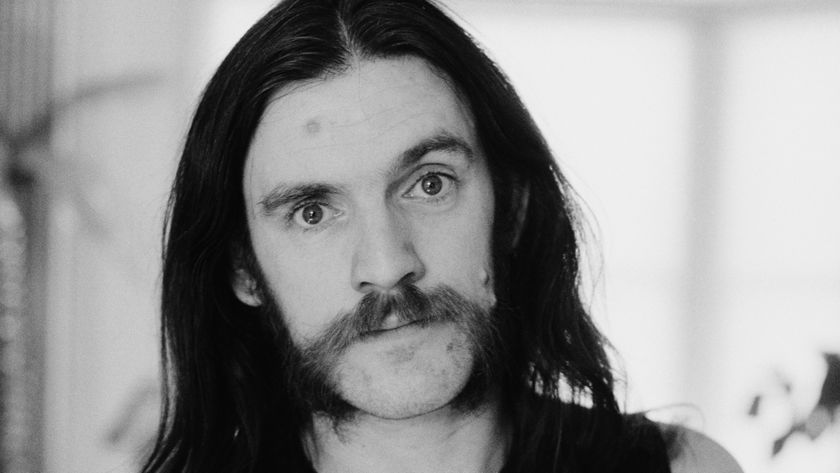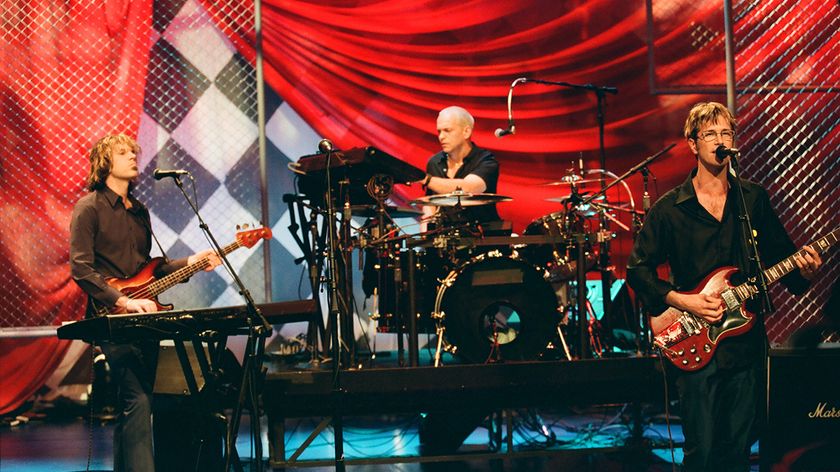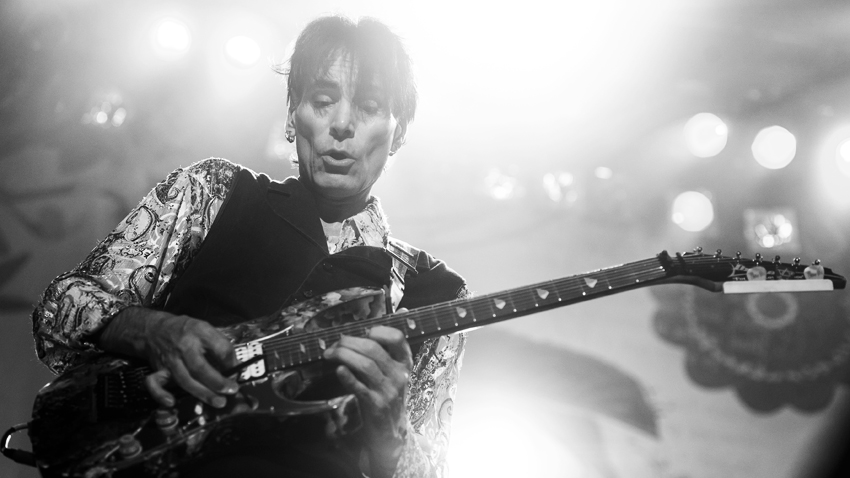
Somebody didn't give Steve Vai the memo - the one that says that, as an artist becomes more successful and the public knows more and more about him, he's supposed to take less chances as he becomes enslaved to the idea of delivering an image that he believes his fans expect.
Case in point: his dramatic (and dramatically fun) Story Of Light tour. If you're anticipating a cold, staid guitar clinic... mmm, wrong gig. True, there's six-string prestidigitation a-plenty, the kinds of miracles and wonderments that have long been Vai's raison d'etre. But in ways big and small, in moments that are wildly engrossing, Vai turns the tables on the established notions of how a guitar hero should behave.
Singing, dancing, slapstick comedy - it's a star-turn of epic proportions, and what makes it so entertaining to watch is that it's so deeply personal: Vai isn't donning a welder's mask so much because he knows his fans will get a kick out of it (and they do); he's doing it because it makes him laugh. And the reason why it works so well is because we're all in on the joke together.
Vai and his ace band (Dave Weiner, guitar; Jeremy Colson, drums; Philip Bynoe, bass; Deborah Henson-Conant, electric harp) are in the final weeks of The Story Of Light's US tour, and on 22 October the extravaganza heads to Europe for a two-month run (which includes a stop at London's Hammersmith Apollo on 2 December).
We caught a gig at the State Theatre in New Brunswick, New Jersey, and shortly afterward, we sat down with Vai to talk about how he puts the show together, what it's like to play the otherworldly looking Ultra guitar (as he does for the song The Ultra Zone) and how his fancy footwork is coming along.
Constructing a setlist - beyond playing songs from the new album and old favorites, is there any kind of metaphysical concept that goes into it?
"I do pace the show and think about the different sections. It's a long show - it's about two and a half hours - but I don't want it to seem long. I try to add elements that change things up and shift your attention around. When I think about the show, I consider what I'd like to see, or what I'd like people to see or walk away with.
Get the MusicRadar Newsletter
Want all the hottest music and gear news, reviews, deals, features and more, direct to your inbox? Sign up here.
"The first thing I do is pull up a bunch of new songs, some favorites and a bunch of tracks that I never played before or haven't played in quite some time. That's when I think about dynamics, tempos and how everything can flow as a whole set. I usually like to open with some high-energy numbers and sprinkle lower-energy numbers throughout, just to create an ebb-and-flow dynamic.
"Then there's elements that I like to include, but I always want to keep the musical integrity. I have great players, so I offer them the opportunity to do short solos. When you do that, you want to make sure that what they're doing is fascinating and maintains the level of the show, and on this tour it's working out really well. Whatever we do, there's got to be a real musical element. I want this to be a big musical event. But I also love performing - I cut my teeth on West Side Story when I was seven years old.
"I'm very mindful of giving people the very best experience that I can. People pay money and they come to see me, so I want to offer them something special. My goal is always to have people leave feeling good and feeling uplifted, but I also want them to leave feeling like they saw something they won't see anywhere else."
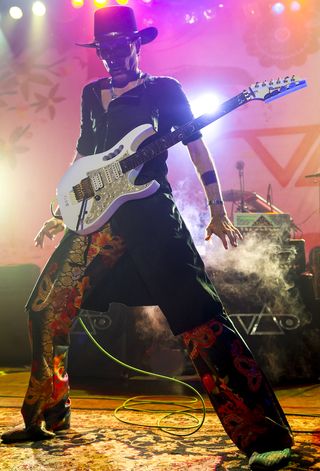
"I'll change my clothes three or four times during the show if I want to. Why not?" © Chris Schwegler ./Retna Ltd./Corbis
It's interesting you bring up West Side Story, because I really noticed how much you've grown as a complete performer on stage.
"Thank you. It's a conscious effort, and any obstacles are my own insecurities that are based on cultural things that I just let get in the way. You know, instrumental guitar players aren't supposed to dance, they're not supposed to perform, they're not supposed to change their clothes. After a while, I said, 'Wait a minute. What am I even thinking here? This is what I like to do!' So I'll change my clothes three or four times during the show if I want to. Why not?
"The goal is always to get closer to the music, no matter what else I'm doing. I'm trying to immerse my consciousness with the notes and let my body move with those notes. It's a beautiful feeling when it clicks. But what happens sometimes is, you're not in the moment, you're thinking about things too much - you're thinking critically, you're thinking about the audience, whether they're enjoying themselves - and all of that stuff distracts you and takes you out of the moment. I like to get to that place where my mind tells me to do something and my body just does it.
"In the past, I've found myself thinking, Oh, maybe I shouldn't be doing this because I'm going to get criticized for it. All of these weird facial expressions that I make, people are going to be talking about them. Stuff like that. But you get to a point where you say, 'Well, who are you? Who do you want to be and what are you comfortable with?' And when you approach that with confidence and clarity, the audience responds as such. But if you do it and you're being critical of yourself, the audience responds critically. It's a weird thing - and that's when metaphysics come in."
Whether you're being deadly serious or completely zany, it all works.
"Yeah, it works it you're being authentic within yourself. Look, I'm a ham, OK? [Laughs] You see me on stage, the ham is cookin'. Sometimes, the ham even gets burnt. [Laughs] But it's enjoyable. When you don't take yourself seriously, the audience feels that, and they're at ease. Taking yourself seriously is almost a topic unto itself. I take myself very seriously, but at the same time, I don't."
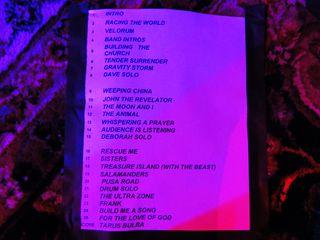
The setlist from the State Theatre, New Brunswick, NJ, 7 September 2012. © Joe Bosso
You're taking the show to Europe in late October. Do you think the set might change for that tour? Are there new songs you might put in?
"The footprint of the set is the same. There's parts that are very pre-planned and worked out. But there's dialogue banter that evolves, and there's places in the set where I tell the band, 'Don't think of anything. Wherever we go, we go. If it turns into atonal, free-form jazz, that's fine.' So it's a mixture of precision and letting things go and dealing with the unexpected.
"As far as adding new songs, in rehearsals, I always say, 'OK, the show's going to be two hours, that's it. That's all people can handle.' And then I count up the minutes and it's three and a half hours, you know? [Laughs] So I have to take an axe to the stuff. Just the song The Story Of Light, the rehearsal on that, which I wanted to include, that took two or three weeks of 10-hour days. Getting the phrasing of the melody, rehearsing it with everybody and that whole last section - it's like a study. I just couldn't do it in the time we had."
Deborah adds great textures to the music and a cool visual element to the show. Because the harp is not a traditional rock instrument, do you work with her differently than other players?
"As you know, a lot of my music is compositional, and there's a lot of arpeggiated guitar parts. They work really well on the harp, especially since it's an electric harp and you can process it. Deborah does a really great job with that, adding those textures. The thing about the harp is, it's not a jamming-type instrument. Harps are tuned a particular way, and if you want a certain note you have to flick a level. Harp players are not trained to jam. They aren't even trained to read music well. So a composer has to understand the limitations of the player, how to write for various hand and finger stretches. I'm actually very good at that - I've studied it very precisely. I can't play it, but I understand it.
"What Deborah has is a little different because she has a strap-on harp with a particular range. She's world renowned, but she has to work on it. Saying 'Take this and go learn it' like I do to Dave Weiner, it's a little different with her. There's a new kind of challenge."
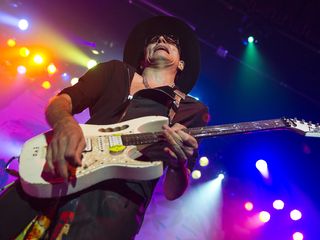
"I tell the band, 'Don't think of anything. Wherever we go, we go.'" © Chris Schwegler ./Retna Ltd./Corbis
The Build A Song portion of the show is a lot of fun. How did it all come about?
[Laughs] "Yeah, we're having a great time with it. It's one of my favorites and one of the most fascinating parts of the show, and it never fails to deliver. We can make songs out of anything. I had this girl come up on stage the other day, and I said, 'Sing a drum beat.' She went, 'I don't know!' I made a drum beat out of that. Then I said, 'Sing a bass part,' to which she said, 'I just don't know what to do.' We made a bass part out of that.
Finally, I said, 'Can you sing a melody?' She said, 'Oh, my God!' Well, guess what? That was the melody! [Laughs] It's so much fun, it's so creative, and the audience gets such a kick out of it. It's something I just thought of. I've never seen anything like it, and I just thought, Sure, try it! I'm so glad we're doing it. It's a blast."
For the song The Ultra Zone you whip out that crazy Ultra guitar. What the heck is it like playing that thing?
"You know, oddly enough, it's very, very comfortable. The way it sits on my body is actually more comfortable than my other guitars. I always like bringing out something that's very left of center - the triple-necked guitar, the heart-shaped guitar. So I had the Ultra guitar hanging on my wall for years, and I looked at it and thought, Hey, why not bring it into reality? I'll use it for The Ultra Zone.
"The difficult thing about performing that song is not the Ultra guitar, it's the shit that I'm wearing. [Laughs] I've got lasers on my fingers, which makes it really difficult to negotiate the neck. I've got a welder's mask on, so I can't really see what I'm doing. But hey, it's part of the show, and every now and then you've got to make concessions. It's so funny when I do that song. I look out to the audience, and everybody's got their cameras out. Like I said, the ham's cookin'." [Laughs]
How does it feel to do John The Revelator on stage?
"Let me ask you, when you saw the show, was Beverly [McClellan] singing it, or was it Vikki [Martinez]?
It was Beverly.
"OK, great. Yeah, that song is a real bear for Beverly to sing. She can't do it every night. We do it only occasionally. Every singer I've ever toured with, they've got to take a day off to rest their voice. Two shows they'll do, and then they have to take a break. Me, I'll do 10 shows in a row, but it's different for singers.
"When Beverly comes out and delivers, she really delivers. She's got to be careful, though. She has to sing that unlike anything she's ever sung before. It's a powerful song."
Speaking of powerful, your dancing is getting pretty good, Steve.
[Laughs] "Thanks. Yeah, I'm learning to throw some shakes up right." [Laughs]
Joe is a freelance journalist who has, over the past few decades, interviewed hundreds of guitarists for Guitar World, Guitar Player, MusicRadar and Classic Rock. He is also a former editor of Guitar World, contributing writer for Guitar Aficionado and VP of A&R for Island Records. He’s an enthusiastic guitarist, but he’s nowhere near the likes of the people he interviews. Surprisingly, his skills are more suited to the drums. If you need a drummer for your Beatles tribute band, look him up.
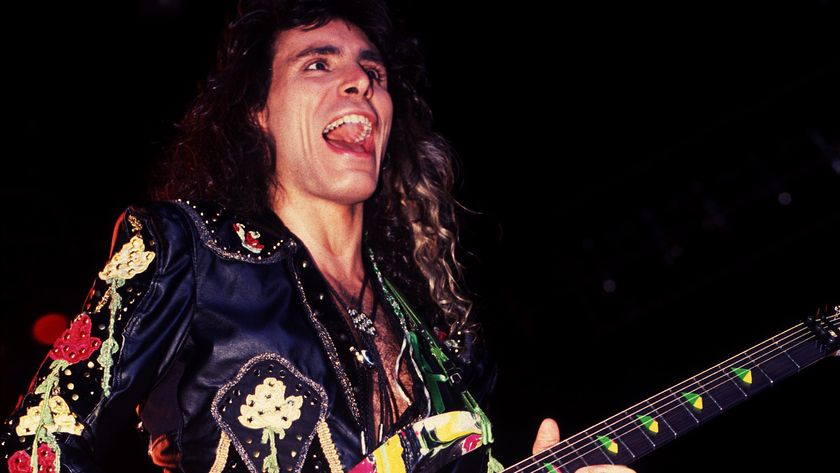
“I saw something coming at me and was about to catch it, then it blew up about six feet in front of me. I went up in the air. I was totally out, unconscious on my back”: Steve Vai recalls his on-stage calamities with David Lee Roth and Whitesnake
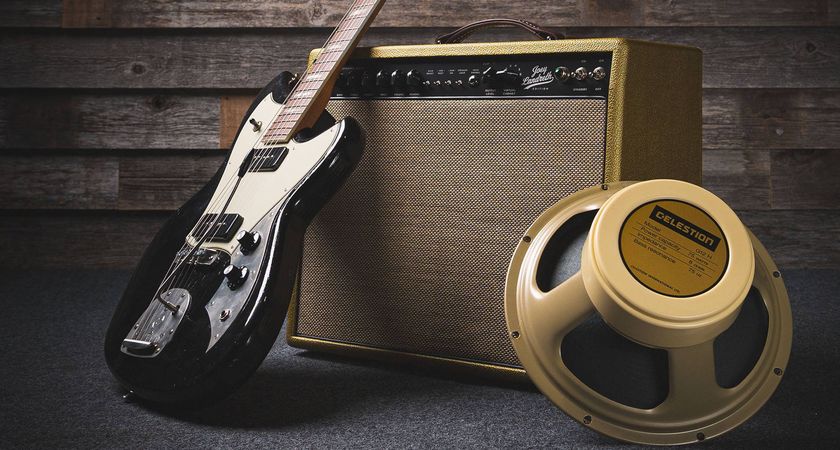
“It showcases a straightforward single-channel layout ideal for both clean tones and mild breakup tones”: Revv Amplification and Joey Landreth join forces for a signature take on the D25 tube combo with onboard virtual cabs/IRs

